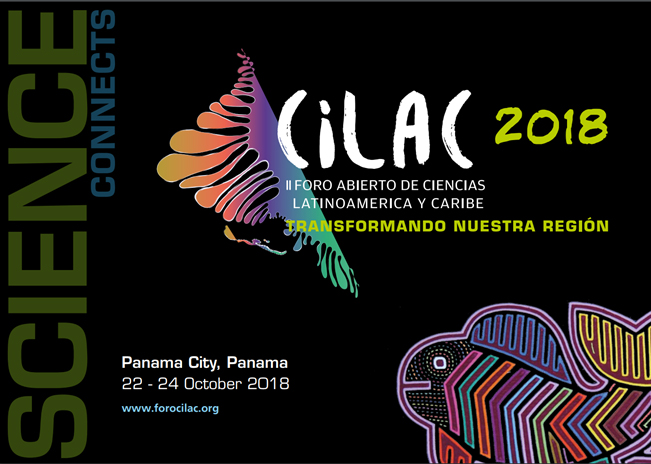| Event Name | LAAAMP dialogue session at CiLAC 2018 |
|
| Start Date | 22nd Oct 2018 | |
| End Date | 24th Oct 2018 | |
| Description | A Dialogue Session entitled "Implementing Advanced Light Source facilities in Latin America and the Caribbean for sustainable socio-economic development" and proposed by LAAAMP in partnership with IUCr, IUPAP, UNESCO has been approved for inclusion in the programme of the next Latin America and the Caribbean Open Science Forum (CiLAC 2018), which will be held in Panama City on 22-24 October 2018.
Session description and rationaleSynchrotron Light Sources are the most sophisticated example of an open and multidisciplinary research infrastructure. They are comparable to super microscopes that probe the inner structure of matter. They produce very intense pulses of light, with wavelengths and intensities that allow detailed studies of objects ranging in size from human cells to viruses and proteins, down to atoms, with a precision that is not possible by other means. They allow researchers to investigate the structure and properties of a wide range of materials, from proteins ‒to provide information for designing new and better drugs‒ to probing novel materials for biotechnology, analysing soils for green agriculture, to engineering applications, and the examination of archaeological artefacts. Because of their high costs and multidisciplinary use, Advanced Light Source (AdLS) facilities provide strong opportunities for integration through networking and cost-sharing, and promote multi-disciplinary collaboration with the wider global community, while promoting science diplomacy and peace at large. Thus, light sources have become prime enablers of scientific and technological progress and innovation, conducive to sustainable development in line with the United Nations 2030 Agenda. AdLSs have revolutionized research in many science and technology disciplines, leading to a proliferation of facilities worldwide. The website lightsources.org has links to some 47 facilities in 23 countries in various stages of operation, construction or planning. However, the UVX at the Brazilian Synchrotron Light Laboratory (LNLS) is the only synchrotron facility operating in Latin America. Interestingly though, such a facility has generated so much in terms of scientific and technological activities, job opportunities, collaborations at the national, regional and international levels that as a result of this process of expansion, the new facility Sirius is currently under construction at the LNLS. Discussions have started about the construction of AdLS facilities in other countries in Latin America, such as Mexico, Puerto Rico and Cuba. The session will showcase how AdLSs have successfully contributed to the socio-economic development of countries and regions, with particular reference to the Brazilian and SESAME experiences, by creating international scientific communities, improving education and creating new job opportunities. Session objectives1. Discussing the next steps toward the establishment of AdLSs in LAC, while learning from the experiences of LNLS and SESAME. 2. Increasing awareness for decision-makers of the advances AdLSs can bring to regions. 3. Advocating, through global initiatives such as the International Year of Crystallography and the International Year of Light. 4. Empowering and inspiring scientists, technologists and policymakers to take proactive roles to promote international science cooperation and develop the human capacity, thus enabling researchers in the Global South to get the most from AdLSs, and be meaningful contributors to the 2030 Agenda for sustainable development. Confirmed panelistsMichele Zema (University of Pavia, Italy and IUCr Executive Outreach Officer), LAAAMP Executive Committee - Moderator Session proposerMichele Zema, IUCr Executive Outreach Officer, LAAAMP Executive Committee |
|
| Location | Panama City Panama |
|
| Contact | Michele Zema [email protected] |
|
| URL | http://worldscienceforum.org/programme/2017-11-10-v-b-light-sources-and-crystallographic-sciences-for-sustainable-development-32 | |

